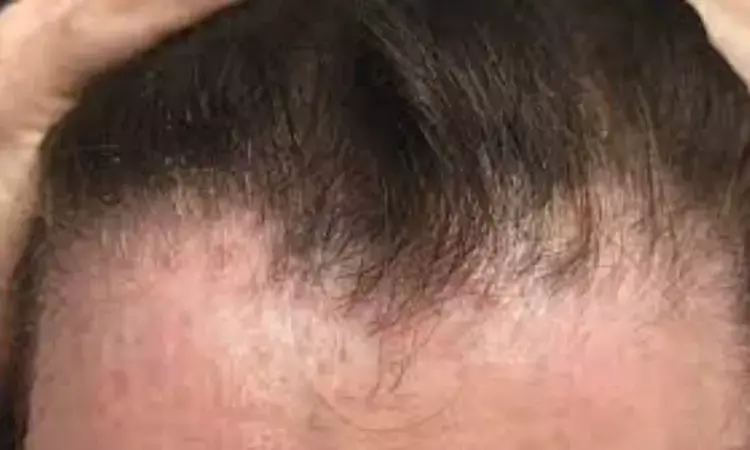- Home
- Medical news & Guidelines
- Anesthesiology
- Cardiology and CTVS
- Critical Care
- Dentistry
- Dermatology
- Diabetes and Endocrinology
- ENT
- Gastroenterology
- Medicine
- Nephrology
- Neurology
- Obstretics-Gynaecology
- Oncology
- Ophthalmology
- Orthopaedics
- Pediatrics-Neonatology
- Psychiatry
- Pulmonology
- Radiology
- Surgery
- Urology
- Laboratory Medicine
- Diet
- Nursing
- Paramedical
- Physiotherapy
- Health news
- Fact Check
- Bone Health Fact Check
- Brain Health Fact Check
- Cancer Related Fact Check
- Child Care Fact Check
- Dental and oral health fact check
- Diabetes and metabolic health fact check
- Diet and Nutrition Fact Check
- Eye and ENT Care Fact Check
- Fitness fact check
- Gut health fact check
- Heart health fact check
- Kidney health fact check
- Medical education fact check
- Men's health fact check
- Respiratory fact check
- Skin and hair care fact check
- Vaccine and Immunization fact check
- Women's health fact check
- AYUSH
- State News
- Andaman and Nicobar Islands
- Andhra Pradesh
- Arunachal Pradesh
- Assam
- Bihar
- Chandigarh
- Chattisgarh
- Dadra and Nagar Haveli
- Daman and Diu
- Delhi
- Goa
- Gujarat
- Haryana
- Himachal Pradesh
- Jammu & Kashmir
- Jharkhand
- Karnataka
- Kerala
- Ladakh
- Lakshadweep
- Madhya Pradesh
- Maharashtra
- Manipur
- Meghalaya
- Mizoram
- Nagaland
- Odisha
- Puducherry
- Punjab
- Rajasthan
- Sikkim
- Tamil Nadu
- Telangana
- Tripura
- Uttar Pradesh
- Uttrakhand
- West Bengal
- Medical Education
- Industry
Socioeconomic Factors May Overshadow Racial Emphasis in Frontal Fibrosing Alopecia: Study Shows

USA: A recent study has revealed that patients with frontal fibrosing alopecia (FFA) are more likely to live in affluent areas, as determined by their Social Vulnerability Index (SVI), compared to those with alopecia areata (AA). The researchers argue that the traditionally held belief that FFA predominantly affects certain racial groups may reflect underlying socioeconomic disparities rather than true racial predisposition.
The study, published in the Journal of the American Academy of Dermatology and led by Jiana Wyche and colleagues from Meharry Medical College, examined the association between socioeconomic status and the prevalence of FFA. FFA is a type of scarring alopecia that has seen a steady rise in cases over recent years. Historically, it has been reported more frequently in White, postmenopausal women. However, the growing number of cases has prompted investigations into potential environmental and lifestyle factors—including the use of facial cosmetics and sunscreens—which tend to be more common in individuals from higher socioeconomic backgrounds.
To better understand the role of socioeconomic status in FFA, researchers conducted a retrospective cohort analysis of patients from Johns Hopkins Hospital, Baltimore, over nine years (2015–2024). The study included 147 individuals diagnosed with FFA and 429 with AA, a condition chosen for comparison due to its similar immune-mediated mechanism. Data were collected from patients across 15 U.S. states, with a large majority (over 84%) from Maryland.
Using the CDC's Social Vulnerability Index—an indicator that incorporates data on income, education, housing, and other demographic factors—the team assessed the socioeconomic background of each patient based on their zip code. The SVI categorizes areas into four levels of vulnerability, with "low vulnerability" (SVI < 0.25) representing the most affluent areas.
The key findings of the study were as follows:
- Patients with frontal fibrosing alopecia (FFA) were significantly more likely to live in low-vulnerability (more affluent) zip codes compared to those with alopecia areata (AA), with rates of 50.3% vs. 34.03%.
- The likelihood of an FFA patient residing in an affluent area was notably higher, with an odds ratio of 1.786.
- When researchers adjusted for age and socioeconomic status, race was no longer found to be an independent predictor of FFA.
- Although unadjusted data showed FFA was more common in White individuals and AA in Black individuals, the adjusted analysis suggests these racial patterns may actually reflect underlying socioeconomic differences.
“Our study suggests that FFA patients are more likely to be from affluent zip codes as determined by their SVI when compared to AA patients,” the researchers wrote. “We believe, therefore, that historical emphasis on race in FFA may have been overstated due to the impact of race on socioeconomic status.”
They concluded, "These findings offer new insights into the factors contributing to FFA and highlight the importance of considering social and economic contexts in dermatologic research and diagnosis."
Reference:
Wyche J, Tsang DA, Aguh C. Odds of developing frontal fibrosing alopecia more closely tied to affluence than race - A retrospective cohort study. J Am Acad Dermatol. 2025 May 16:S0190-9622(25)02133-4. doi: 10.1016/j.jaad.2025.05.1394. Epub ahead of print. PMID: 40383279.
Dr Kamal Kant Kohli-MBBS, DTCD- a chest specialist with more than 30 years of practice and a flair for writing clinical articles, Dr Kamal Kant Kohli joined Medical Dialogues as a Chief Editor of Medical News. Besides writing articles, as an editor, he proofreads and verifies all the medical content published on Medical Dialogues including those coming from journals, studies,medical conferences,guidelines etc. Email: drkohli@medicaldialogues.in. Contact no. 011-43720751


